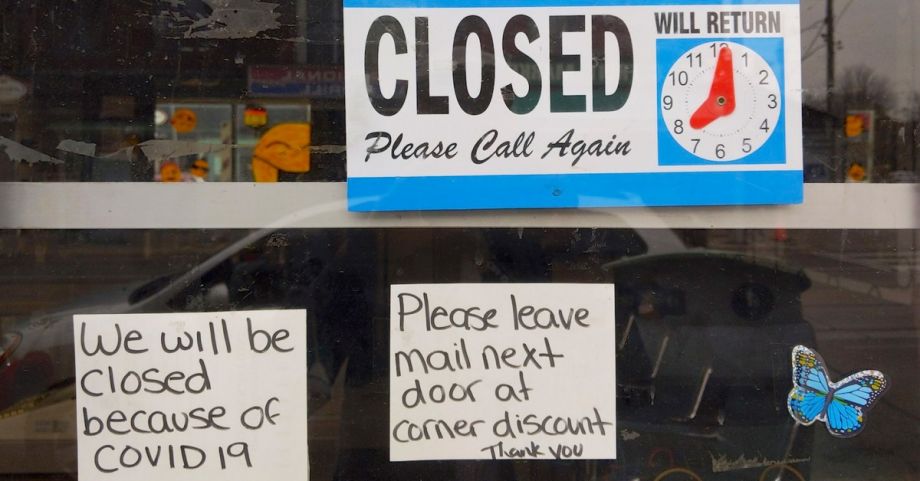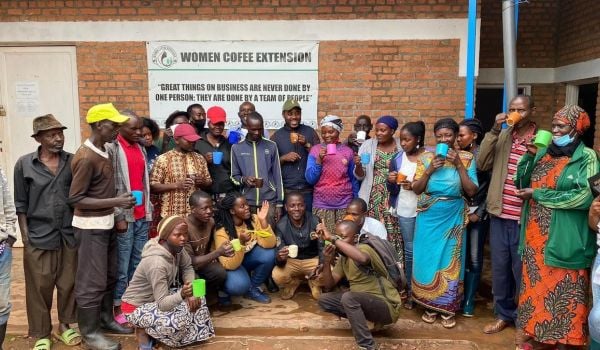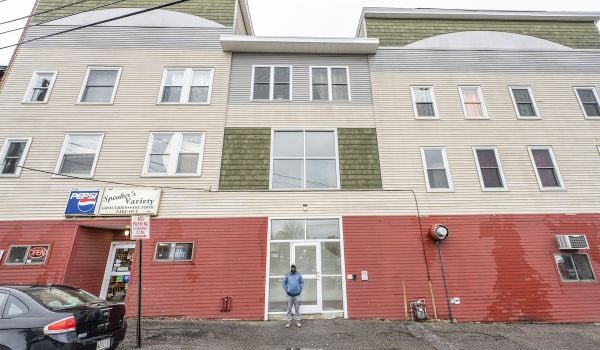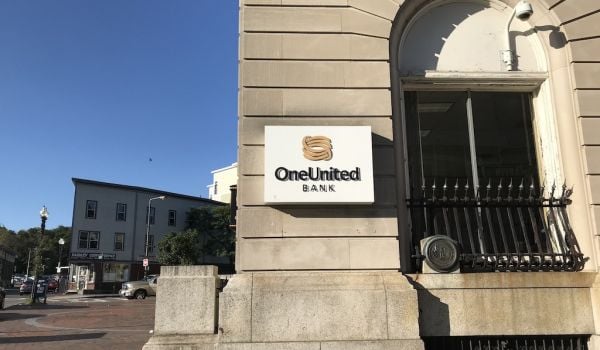Kennedy Smith has been keeping a list of financial and technical assistance programs that local governments have been putting out in response to small business needs in the wake of COVID-19. She says her list is up to 700 programs so far, totaling some $7 billion.
She’s been surprised by cities dipping into unconventional sources of funding, like deferring city councilmember salaries to fund grants for small businesses, or moving local public pension dollars out of investments in big companies and into local small business lending.
Smith has spent years working on downtown revitalization across the country. She’s now a senior researcher at the Institute for Local Self-Reliance, a national research and policy organization. She still gets calls from former colleagues and other former contacts, searching for ideas, inspiration and sometimes a sympathetic ear.
“There’s been some deep soul searching,” says Smith. “Folks have had to triage, with limited funding available locally, maybe they can give out 50 grants but get hundreds of applications for assistance. It’s been heartbreaking for community leaders to make those decisions behind the scenes.”
Trying to make some sense of the chaos, Smith authored a new report for the Institute for Local Self-Reliance, “Safeguarding Small Business During The Pandemic: 26 Strategies For Local Leaders.” The report synthesizes the best of the 700 programs Smith found across the country, and makes some suggestions for other strategies that haven’t yet been tried. It organizes the strategies into three sections; “first,” actions to provide “quick relief to keep businesses afloat”; “next,” actions to “help businesses adapt and pivot”; and “later,” actions to “fix systemic problems that the pandemic has laid bare.”
Since the beginning of the pandemic, much of what’s been done locally has felt like stopgap measures, as local governments await a more comprehensive federal response that seems less and less likely every week under the current Congress.
“The expectation was federal dollars would be slow to start flowing,” says Smith. “It’s still a mix of both hope and frustration.”
That’s why the first strategy in the “First” section of the report is simply helping businesses apply for the federal aid that is still available. The Paycheck Protection Program reached millions of small businesses (while also leaving out millions more and drawing scrutiny for funneling dollars to wealthy firms); but ultimately the program closed on August 8 with $134 billion left on the table. Congress may decide to re-open the program in a later COVID-19 response package. The Small Business Administration’s Economic Injury Disaster Loan program is still open to new applications.
More recently, the Federal Reserve’s Main Street Lending program, authorized months ago as part of the CARES Act, finally started taking applications from eligible businesses. But, even after twice changing the terms of the program in response to feedback that its original parameters left out many small businesses, the program has been slow to generate interest on the same scale as the Paycheck Protection Program.
Also in the “First” section of the report: helping businesses negotiate with landlords to relieve rent pressure. Smith’s longer list of programs includes many examples of cities providing grants that can cover rent, or in some instances even offering to pay a portion of rent directly to landlords on behalf of the business. But the report also suggests helping businesses negotiate a shift from a fixed-rent lease to one with a lower base rent plus a percentage of the business’s gross sales, above a specified amount, and maybe waiving a property owner’s taxes in exchange for doing so.
In New York City, more than a third of bars and restaurants didn’t pay rent last month. The city actually launched its Commercial Lease Assistance program back in 2018, providing free legal assistance to independent small businesses for negotiating a lease, resolving landlord issues, responding to an eviction notice, breach of contract disputes, and lease renewal. It has served an estimated 1,200 small businesses so far, 74 percent of which were owned by people of color, 65 percent were owned by immigrants and 51 percent were women. After $1.2 million in annual funding for three years, it was slated for a $1.5 million expansion in the budget passed earlier this year, but it was cut ostensibly because of new budget constraints due to COVID-19’s impact on the city.
After outcries from local businesses, Mayor Bill De Blasio admitted it was a mistake to cut the Commercial Lease Assistance program’s funding, and found the funds to renew the program after all.
Another urgent “First” priority is capping app-based restaurant meal delivery commissions and fees, as more than a dozen cities have done so far including New York City, Washington, D.C., Clark County, Nevada, San Francisco, and the entire state of New Jersey. Smith says that while the fees have always been high, often between 10 and 30 percent, until now meals sold via these apps have remained a small percentage of sales for each business.
“The apps would often help provide some exposure to new customers,” says Smith. “But bang, when all restaurants closed and had to go to pick up and delivery, the entire formula shifted, so the fees are now eating up profits.”
The “Next” section of the report encompasses strategies to help businesses pivot into new models relying mostly on online sales or pickup and delivery. If as few as 20 percent of shoppers avoid or minimize trips to shops and offices until a vaccine is available, it could mean the death of tens of thousands of small businesses nationwide, according to the report.
The report notes the city of Detroit’s “Digital Detroit” program, which competitively selected 100 small businesses to receive free website development workshops, branding workshops and webinars, a small business website and three months of website hosting. Smith says it’s the technical assistance that is equally important as financial — for those going online to help them set up a website and e-commerce operation that doesn’t rely on Amazon and its predatory pricing; and for those that can re-open, to help them comply with new safety regulations in place during the pandemic.
Technical assistance seems like an obvious need, but Smith notes there is a pattern in who gets more of it than others. Businesses with stronger banking relationships tend to get more, sometimes through their banker’s relationships, since the bank doesn’t want its borrower to default. But fewer than 1 in 4 Black-owned employer firms and 1 in 10 Black-owned nonemployer firms have a recent borrowing relationship with a bank, according to a recent report from the Federal Reserve Bank of New York.
“Businesses owned by minorities and women are not getting assistance they need because they tend to have no banking relationship,” says Smith.
The “Later” section of the report focuses on fixing “the systemic problems the pandemic has exposed,” such as the dramatic shift in banking away from community banks. In 1994, small banks had a 50 percent share of the industry’s assets; by 2019, that share had dropped to only 17 percent. Just four banks now hold 40 percent of banking sector assets — Bank of America, Citigroup, JPMorgan Chase, and Wells Fargo.
But despite how much they’ve declined as a share of the banking sector, community banks are still responsible for a majority of small business lending, according to an analysis by Smith’s colleagues at the Institute for Local Self-Reliance.
The reasons for the shift away from community banks are many, and complicated. Much of the policy needed to change is at the state and federal levels, but Smith’s report argues that state and federal policymakers would be more likely to make those changes if pressured by local leaders.
The “Later” section also suggests tweaking regulations on small business and commercial development in ways that tip the scales more in favor of locally-owned small businesses.
Many cities are temporarily streamlining permitting processes to allow more bars and restaurants to add sidewalk and street seating, and those streamlined processes could be made permanent. Before the pandemic, Los Angeles was in the middle of streamlining its restaurant alcohol permitting process, reducing the time and cost from several months and $13,000 to several weeks and $3,000. The city may finalize that change before the pandemic is over.
The report also argues that now might be a good time to switch to “form-based” zoning codes, specifying types of buildings and density levels instead of exact uses. Over 500 cities and towns have now adopted form-based codes, according to the report. One example it notes is Arlington County, Virginia’s Columbia Pike form-based code, “transforming an auto-oriented corridor into a mixed-use neighborhood with a variety of housing types and a robust mix of ground-floor businesses.”
At the same time, the “Later” section suggests adopting a “formula business ordinance,” such as in San Francisco, to limit the development of large corporate chains.
“[Too many formula businesses] can choke out space and opportunities for local entrepreneurs and render downtowns and neighborhood business districts less useful and appealing to residents,” the report reads.
More broadly, Smith’s report suggests it might be time to reconsider the overall amount of commercial development and whether it’s time to repurpose some of it. According to the report, in 1960, there were four square feet of retail space per capita in the U.S.; by 2017, there were 41 square feet per capita — more than a ten-fold increase.
“But retail demand — the amount of money that Americans can realistically spend on products and services — did not keep pace with this aggressive growth in commercial building, leading to a glut of retail space,” the report reads.
And now those spaces are falling into even deeper distress due to the pandemic. Tenants aren’t paying rent and landlords are missing mortgage payments. Some of them will be looking to sell off distressed commercial properties and deep-pocketed private investors are ready to acquire those properties the same way they acquired hundreds of thousands of single-family homes in the aftermath of the last financial crisis. Some of those deals stand to benefit from Opportunity Zone tax incentives created under the 2017 Tax Cuts and Jobs Act.
“I’ve already seen a couple news articles about Opportunity Funds looking to buy distressed properties,” says Smith. “But I’ve also heard a couple communities talking about local land banks buying vacant or distressed commercial space and being patient to make that space available later for businesses trying to get back on their feet.”
This article is part of The Bottom Line, a series exploring scalable solutions for problems related to affordability, inclusive economic growth and access to capital. Click here to subscribe to our Bottom Line newsletter.

Oscar is Next City's senior economic justice correspondent. He previously served as Next City’s editor from 2018-2019, and was a Next City Equitable Cities Fellow from 2015-2016. Since 2011, Oscar has covered community development finance, community banking, impact investing, economic development, housing and more for media outlets such as Shelterforce, B Magazine, Impact Alpha and Fast Company.
Follow Oscar .(JavaScript must be enabled to view this email address)


















